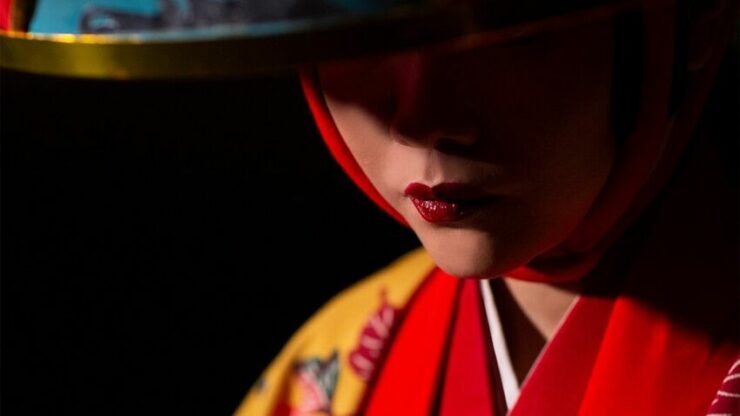In a world where words often dominate, there are performances that transcend language barriers and speak directly to the soul. Haru is a thought-provoking and true celebration of the sistership between humanity and nature. Drawing from the rich heritage of Ryukyuan dance, Haru takes audiences on a poignant journey that celebrates the resilience, strength, and profound connection of Okinawan women to their enchanting island region.
The Ryukyu Dynasty, which lasted from the 15th to the 19th century, played a significant role in shaping the culture and traditions of the Ryukyu Islands, including Okinawa. During this period, the Ryukyu Kingdom established itself as a flourishing maritime trading hub, blending influences from Japan, China, and Southeast Asia.
The narrative unfolds through the graceful movements of an all-female cast, allowing the universal language of dance to convey the essence of the women of the island. Without relying on spoken words, the performance becomes a canvas for emotions, dreams, and the inherent beauty of human experiences.
At the heart of Haru is the celebration of the deep bond between Okinawan women and the diverse nature of their island home. Through delicate movements and mesmerizing choreography, the dancers weave a tapestry that reflects the vibrant landscapes and fascinating cultural elements of the region. It becomes a visual love letter to the enchanting landscapes, customs, and traditions that have shaped the lives of Okinawan women for generations.
Haru invites the audience on a journey of introspection and appreciation. By presenting the narrative solely through dance and traditional music, the performance transcends linguistic boundaries and allows the universal language of movement to speak directly to the heart. Each gesture, step, and expression carries profound meaning, evoking a range of emotions that resonate deeply with viewers. To aid the sharing of culture and alleviate any narrative confusion, the audience was provided with a pamphlet of information about each dance, with lyrics and intentions explained.
The show cleverly juxtaposes more formal dances with moments of fun storytelling. The opening number, Kagiyade-Fu, mesmerizes as it introduces us to the style of Ryukyuan dance. Every member of the company showcases intentional and superbly controlled movements, from the delicate lift of a toe to the flick of a wrist, establishing a profound respect for the talents of the dancers. The Me-Nu Hama dance captivates with its visual storytelling, each movement mimicking the graceful ferry boats and plovers flying over the beach ahead. Adding a playful touch, the duet titled Kanayo-Amakawa features a young man and woman dancing together in a innocent manner, revealing the versatility of the piece. These moments of humor and lightness provide a refreshing contrast to the more focused segments.
A particular highlight is the Matsumurano Passai (Karate Kata), where the strength of the solo performer shines through. The simplistic lighting choice casts her shadow on the back of the stage, enhancing the captivating presence she exudes. The absence of music, which had been prominently featured prior, creates a compelling performance that grips the audience’s attention. The piece culminates with the beautiful and emotive performance titled Chijuya, featuring a dancer accompanied by live music and song. The lyrics of the poem describe a bird crying on the seaside, drawing a poignant comparison with a person who left their hometown alone and sad, yearning for the thoughts of their family and loved ones. This dance stands out as one of the most representative and emotionally resonant pieces created after the abolition of the kingdom and the Ryuku Dynasty.
While Haru explores intriguing themes, some elements may be considered controversial from a different perspective. The dance Shundo portrays a contrast between conventionally beautiful dancers and those considered “ugly,” raising questions about equality and not judging based on appearances. The presentation, with taller/older dancers wearing disfigured caricature masks and performing awkward movements, can be uncomfortable. However, it is important to note that the presentation does not glorify these beliefs as modern-day but presents them objectively, allowing the audience to form their own opinions. The intentions noted in the pamphlet challenge discriminatory attitudes and highlight the shallowness of beauty standards.
Haru at Prague Fringe 2023 is a testament to the enduring power of dance, tradition, and the celebration of women. Through the captivating artistry of Ryukyuan dance, this production beautifully portrays the life of a nameless woman and her profound connection to the enchanting island she calls home. The absence of words in “Haru” becomes its strength, allowing the audience to immerse themselves in a world of beauty, resilience, and profound cultural significance. It is an invitation to embrace the universal language of dance, where stories unfold and emotions resonate.









